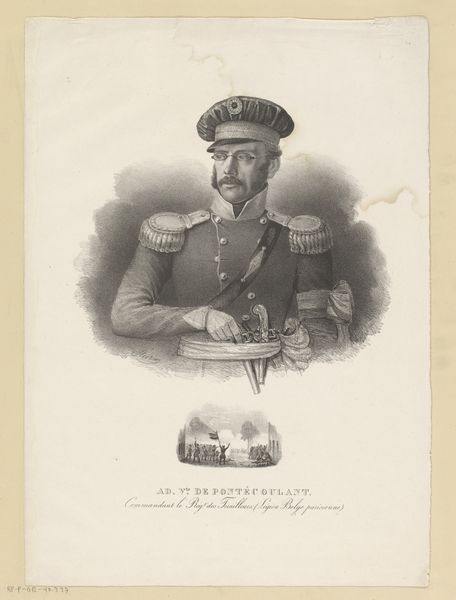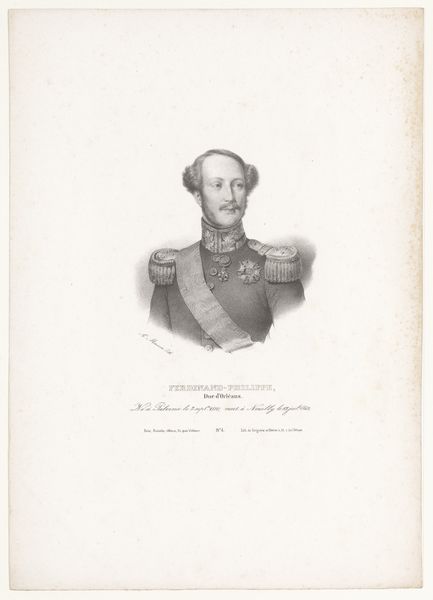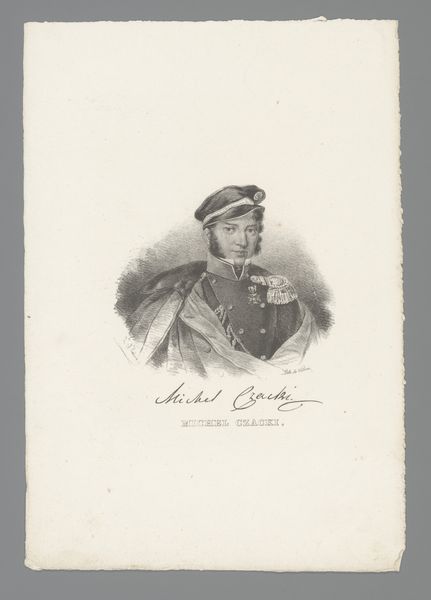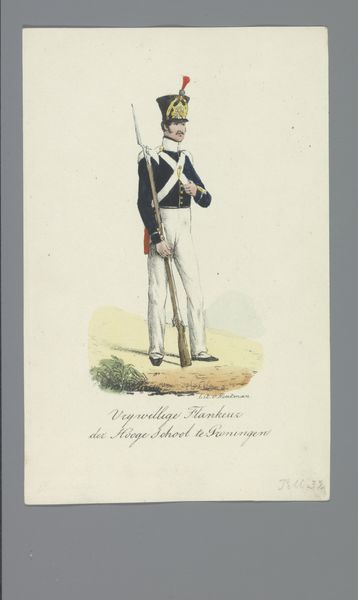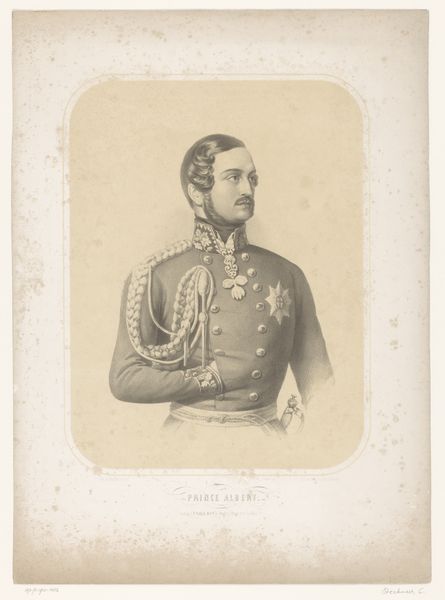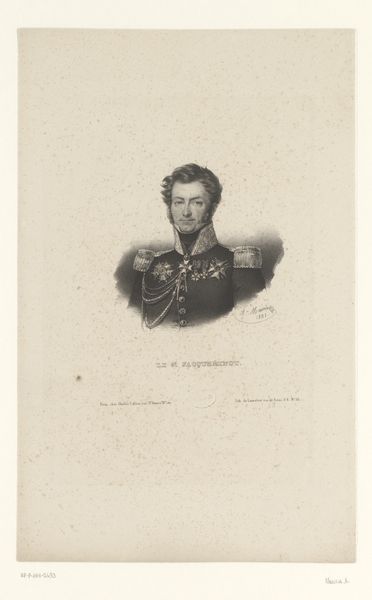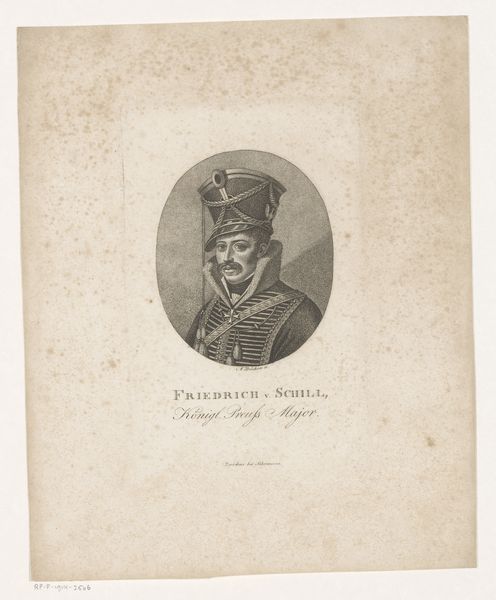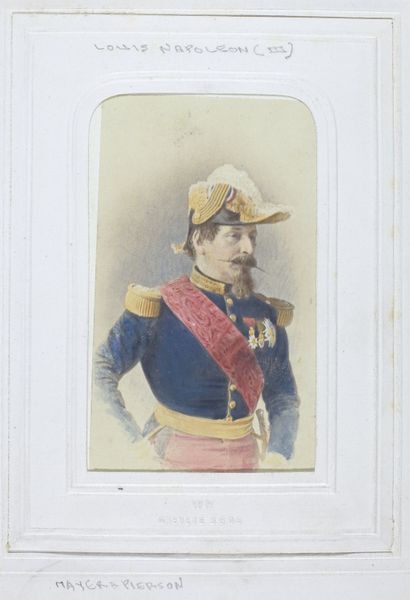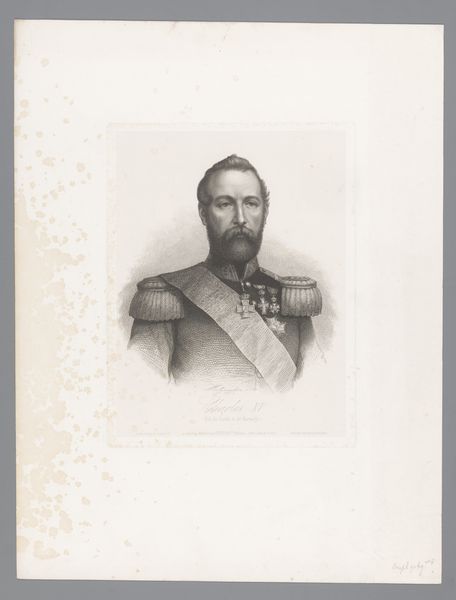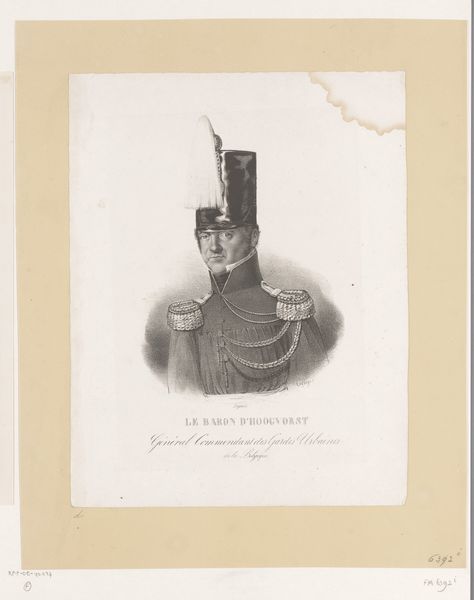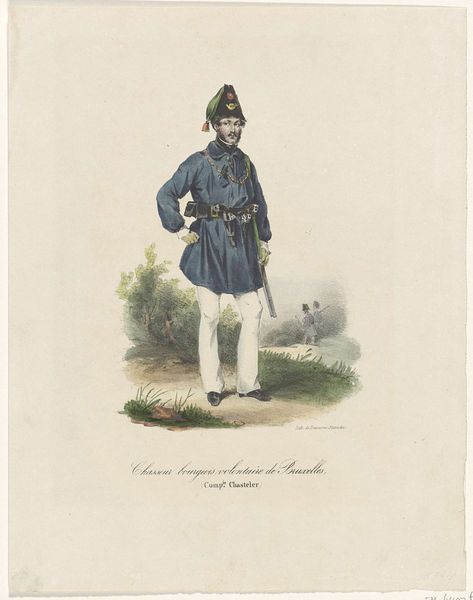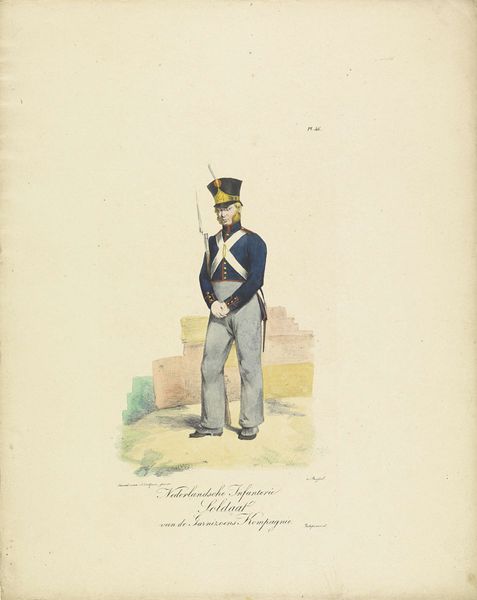
drawing, pencil
#
portrait
#
drawing
#
pencil sketch
#
romanticism
#
pencil
#
academic-art
Dimensions: height 276 mm, width 180 mm
Copyright: Rijks Museum: Open Domain
Curator: At first glance, there's a fragility to it, like catching a dream before it fades completely. So subtle in its shading, it almost disappears into the paper. Editor: Indeed. We're looking at an intimate portrait rendered with pencil, titled "Portret van Ludwik Stecki." This dates back to somewhere between 1832 and 1839, originating from the Romanticism movement. It's unsigned. Curator: Romanticism, yes. He looks the part, all distant and... untouchable. That faraway gaze definitely screams, "brooding intellectual.” Editor: Brooding, perhaps, but also a product of his time. These highly detailed, meticulously crafted portraits, especially of those in military attire, were very fashionable displays of status and allegiance during the first half of the 19th century in Europe. Curator: Well, he's certainly ornamented for battle or the ballroom. Medals, epaulettes... is that... hair? Is that his or part of the coat? Looks so very big, I wonder does this accentuate or somehow disguise him? Editor: Quite observant. Yes, the elaborate curls surrounding his face are part of his extravagant military jacket, popular with the aristocracy. His very clothing proclaimed wealth and power. Though crafted with great skill, one might question the authenticity behind these rigid visual vocabularies of portraiture. Curator: It makes me consider the sitters experience, too, not merely what they stood for! I feel that this might conceal him. You know, the man inside the uniform. I can barely catch the eye and connect to the fellow. I suppose he may simply like dressing up and performing to impress... We’ve all done that... right? Editor: Performance is integral. He likely understood and participated actively in this construction of image, reflecting his sense of self within broader societal expectations. That makes you wonder about our expectations in art? Is this piece a good way of truly knowing Ludwik? Curator: A fun point. Perhaps we have glimpsed part of who he wanted to be through his commissioned attire and this drawing. A portrait is, as much about the artist interpreting the sitter as about the sitter projecting something outward. Isn’t that just like ourselves, really? We decide which parts we show. Editor: A layered perspective. In the end, regardless of historical interpretation, portraits allow glimpses into the negotiation between identity and representation, offering space to ponder human nature, social expectation, and our urge for understanding each other across time.
Comments
No comments
Be the first to comment and join the conversation on the ultimate creative platform.
